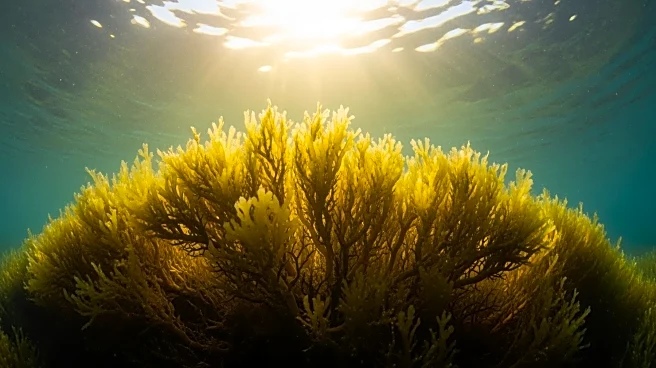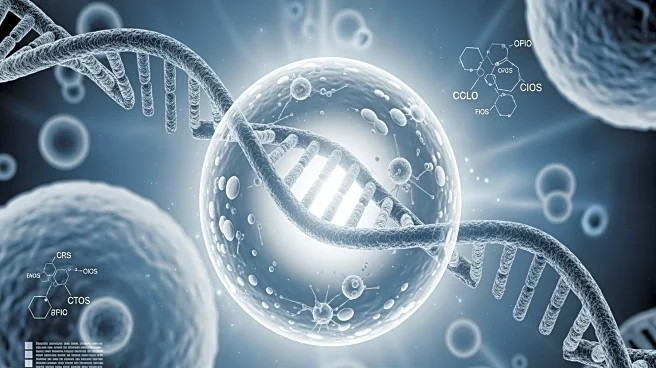What's Happening?
Researchers from Osaka Metropolitan University have uncovered a unique mechanism by which marine green algae protect themselves from intense sunlight. The study, published in Cell Reports Physical Science,
reveals that a pigment called siphonein enables algae to continue photosynthesizing efficiently under strong light conditions. This pigment is part of the algae's light-harvesting complex, which absorbs sunlight and converts it into energy. Under excessive light, chlorophyll can enter a 'triplet' state, producing reactive oxygen molecules that damage cells. Siphonein, along with other carotenoids, helps dissipate this excess energy through triplet-triplet energy transfer, preventing cellular damage. The research focused on Codium fragile, a type of marine green alga, and used electron paramagnetic resonance spectroscopy to demonstrate the effectiveness of siphonein in neutralizing harmful energy.
Why It's Important?
The discovery of siphonein's role in protecting algae from sunlight damage has significant implications for renewable energy technologies. By understanding how algae manage light absorption and energy conversion, scientists can develop bio-inspired solar technologies that are more durable and efficient. This research could lead to advancements in solar panel design, enhancing their ability to withstand intense sunlight without degradation. Additionally, the study contributes to the broader understanding of photosynthesis, potentially influencing agricultural practices and the development of crops that can better tolerate extreme light conditions.
What's Next?
Future research will aim to further clarify the structural characteristics of carotenoids that enhance quenching efficiency. This could enable the molecular design of pigments that optimize photosynthetic antennae, paving the way for innovative solar technologies. Researchers may also explore the application of these findings in agricultural biotechnology, developing crops with improved resilience to sunlight. Collaboration between biologists and engineers could accelerate the integration of these bio-inspired solutions into commercial solar products.
Beyond the Headlines
The study highlights the evolutionary adaptations of marine algae, showcasing their ability to thrive in challenging environments. This research underscores the importance of understanding natural processes to inspire technological innovation. The findings may also prompt ethical discussions on the use of genetic engineering to enhance photosynthetic efficiency in plants, balancing ecological impacts with technological benefits.












